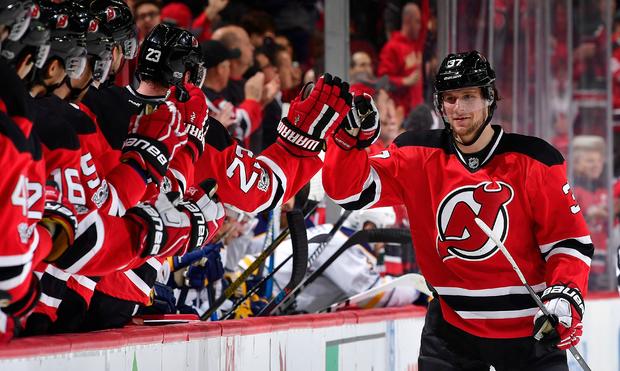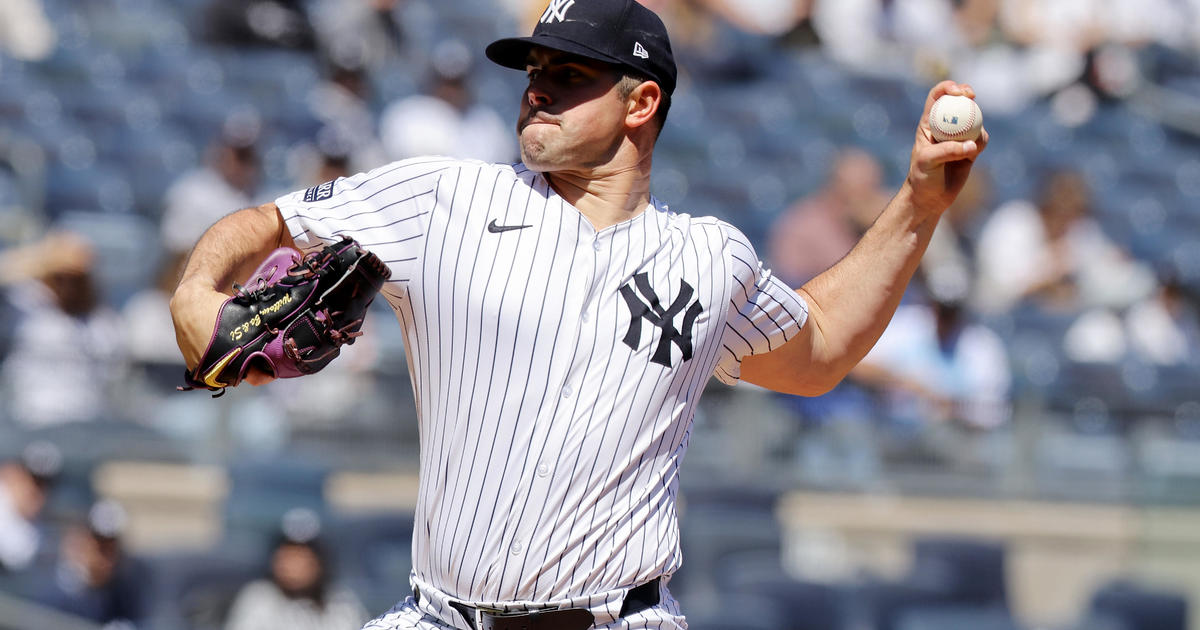Lichtenstein: Power Play Surge Has Devils Entering Bye Week Optimistic
By Steve Lichtenstein
» More Columns
Shh, the Devils do not want anyone to know about Geoff Ward.
The assistant coach, who actually is highly regarded around the league (he worked with the Bruins during their 2011 Stanley Cup run), is in his second season under John Hynes. Part of Ward's responsibilities is to coordinate New Jersey's power play.
Ordinarily, one wouldn't expect much production from a group that has struggled so mightily to score at even strength in Ward's tenure. Yet the Devils finished a respectable ninth in power play efficiency (19.9 percent) last season despite ranking dead last in total goals.
And, after a rough start to 2016-17, New Jersey has again found the power to light the lamp with regularity. In their last 11 games, the Devils have gone 10-for-32 (31.3 percent) with the man advantage, good for the second-best rate in the NHL during that span. They are just a middling 15th in total goals scored in the same period.
The Devils are 7-3-1 in that stretch after a pair of power play goals helped them to a 2-1 victory over visiting Buffalo on Monday, New Jersey's first win at Prudential Center in eight games since Jan. 2.
"When the power play struggled, we did not win possession of the puck," Hynes said. "Our intensity level in entries, like when we entered the zone with the puck, we didn't get it back. We didn't start a lot on faceoffs with it, and we didn't win a lot of battles with it."
A tweak that Ward and Hynes made to the power play formation has helped put the Devils in better position to both minimize the number of 50/50 puck battles and to win more of them.
New Jersey is still basically using a 1-3-1 set-up, but it is no longer running the plays from a half-wall. The power play often looked stagnant, with the puckholder waiting to find a passing lane to a teammate for a one-timer. If pressured, the Devil at the half-wall would be forced to wrap the puck around the boards, creating another battle. Rinse and repeat until the defense gathered the puck and iced it.
The Devils' power play has been much more free-flowing of late. The plays are now starting from the blue line, with a defenseman in the middle of the ice. On the first unit, for example, Taylor Hall and Kyle Palmieri are on Andy Greene's flanks higher up along the blue line.
Let's say Hall is the recipient of the first pass from Greene. Hall then would skate towards the left wing circle with a little speed, where he would have multiple options.
Hall has exceptional vision, so if he sees a cutting Palmieri open on the opposite side, he can thread a pass across the circles to give Palmieri an opportunity against a goalie who would be moving from side-to-side. Or, Hall could look to Travis Zajac setting up in the high slot.
The most frequent result, however, is a shot toward the goal. Miles Wood's job is to set up camp in front of the netminder to provide screens and to look for rebounds. Anything that hits the net creates chaos, which the Devils have used to their advantage by keeping the puck moving.
Against the Sabres, it was the second power play unit that solved goaltender Robin Lehner about four minutes after Buffalo tied the game in the third period on a soft goal from a sharp angle by Tyler Ennis.
Devils defenseman Damon Severson, from just inside the blue line, fed Mike Cammalleri, who was above the left faceoff circle when he wristed the puck on net. Lehner, bothered by Adam Henrique's attempt at a high deflection, couldn't catch the puck cleanly. It instead dropped onto the stick of Pavel Zacha, who had moved in from the high slot to clean up the garbage.
"We play a fast game now," said Zacha, the 19-year-old rookie who also recorded an assist on birthday boy Henrique's second-period power play goal. "We don't wait for the other team to get on you. We play aggressive and then we create a lot of chances."
"The formation change has been good, where they can attack more on their forehands and shoot," Hynes added. "But to the players' credit, I think that they've bought into and understand that the power play is about attacking and they're getting shots to the blue paint, they have accuracy on the shots, and they're creating second and third chances. They can then recover the rebounds because they've drawn the penalty killers into the net."
This run has allowed the Devils to head into their "bye week" just three points behind the Flyers for the eighth and final spot in the Eastern Conference playoff race. Though their competitors will be accumulating points while making up their games in hand prior to New Jersey's next game on Sunday versus visiting San Jose, the Devils are still showing signs of life.
Give the assistant coach an assist.
For a FAN's perspective of the Nets, Jets and the NHL, follow Steve on Twitter @SteveLichtenst1




